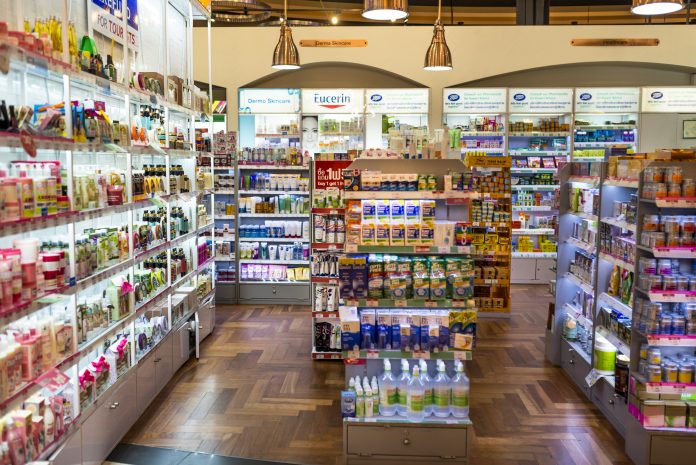There have been 800 pharmacy closures recorded since 2015; digital transformation might be the solution to save our high street
The pharmacy shop front, once a mainstay of every high street, is becoming increasingly rare. In the last seven years, high operating costs, rent overheads, and a change in consumer habits have led to the closure of over 800 pharmacies since 2015, a trend that shows no sign of reversal.
By 2024, up to 3000 pharmacies may be lost
Researchers from University College London have estimated that, by 2024, up to 3000 pharmacies may be lost. And when physical pharmacy outlets close their doors, patients and communities are often left in the lurch, without access to the essential services that pharmacists and pharmacies provide. Typically, it’s vulnerable patient groups hit hardest by pharmacy closures, including older people and those without the means to travel long distances to alternative locations.
To cushion the blow dealt by pharmacy’s shrinking physical presence, global health systems are in the midst of adaptation and innovation drive. Digital transformation is central to this process, with new infrastructures being created to manage every step of the patient journey by means that are untethered to a physical location. Although this transformation is far from complete, it’s on track to deliver benefits to pharmacy providers, to patients and population-level health outcomes.

What is the reason behind the pharmacy closures?
The reasons behind the avalanche of recent pharmacy closures are complicated, but fiscal pressures and changing consumer demands are undoubtedly close to the top of the list.
Running a pharmacy business profitably requires striking the right balance between the range of medications and services on offer and the costs of providing these medications and services. But as government funding shrinks and the costs of everything from staff wages to store heating rises exponentially, pharmacy owners face tough choices. Savings must be made, either by ceasing the provision of certain services or by finding more efficient ways to offer them.
The reasons behind the avalanche of recent pharmacy closures are complicated
The way patients would like to interact with their pharmacy has also changed. Patients want convenience and flexibility when requesting and ordering their medication. In today’s world, using technology to help make life easier is the norm, and the pharmacy sector is not immune from this change.
This is where digital pharmacy innovators are stepping in with solutions designed to make every step of the patient medication journey faster, more convenient and more sustainable.
What does digital transformation in pharmacy look like?
One of the important applications of digital pharmacy infrastructure is to seamlessly support the consultation to prescription to medication delivery pipeline.
With the right digital platforms in place, patients can engage in a virtual consultation with a doctor, have any required prescriptions digitally signed and sent to a dispensing pharmacy, and then have the medication delivered to the location of their choice. Fully trackable, this process can be completed in a matter of hours (as opposed to the days that non-automated, analogue processes can take), and the patient doesn’t need to leave their home.
It is essential that digital pharmacy platforms are properly integrated
It is, however, essential that digital pharmacy platforms are properly integrated – i.e. they can ‘talk’ to and share information with existing systems – to minimise friction and reduce delay in the period between a clinician prescribing and the time that prescriptions are fulfilled.
The benefits of digital pharmacy are not restricted to patients. For clinicians, moving the prescription process into a digital space provides them with an end-to-end overview of the process whilst reducing the time they must spend signing and sending prescriptions. For pharmacists, fewer paper prescriptions, automated processes, and easier stocktaking allows time and resources to be conserved.
A fully-inclusive future of pharmacy
It’s important to note that advocating for digital transformation in the pharmacy sector is not the same as advocating for a fully-online future for healthcare provision.
In-person care will always have a critical role to play in supporting the health of communities
In-person care will always have a critical role to play in supporting the health of communities, and some degree of physical presence must be maintained. However, we cannot let the pharmacy sector be left behind as the rest of the healthcare system modernises and evolves to meet new needs and thrive under changed conditions. The future of pharmacy is a blend of the best of digital and in-person care, it does not need to be one or the other. A modern healthcare system should embrace both and leverage the respective benefits they bring to provide the best possible care to patients.
As digital transformation gains momentum, the challenge lies in ensuring a consistently high standard in the technologies deployed and in educating patients and providers on how to access the newly-available benefits. By collectively holding tech providers and pharmacies accountable for the delivery of consistently excellent service to all stakeholders, we can build a healthy future for pharmacies and for patients.
Written by Adam Hunter, Chief Commercial Officer at Phlo Connect












These are relevant things to consider